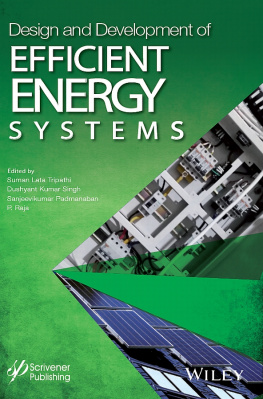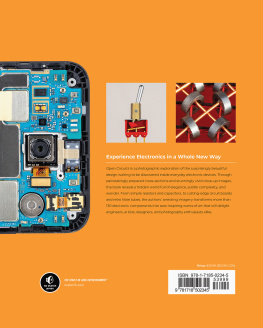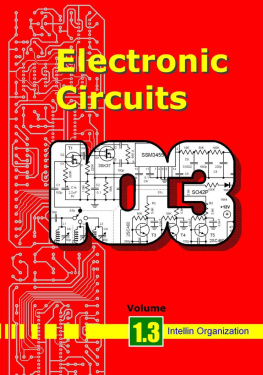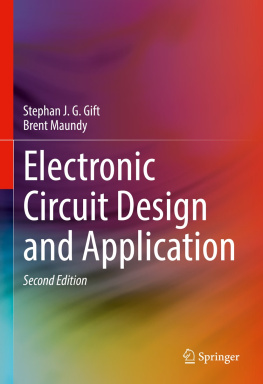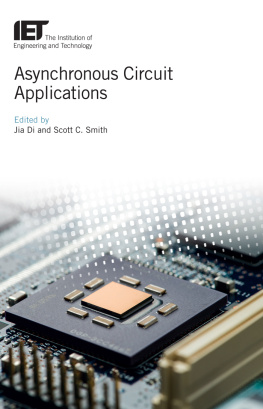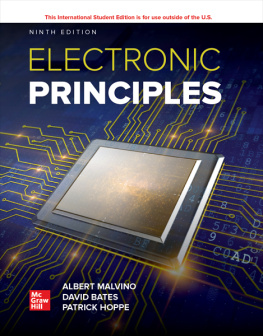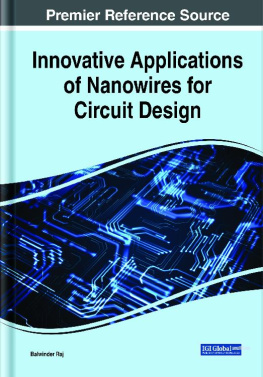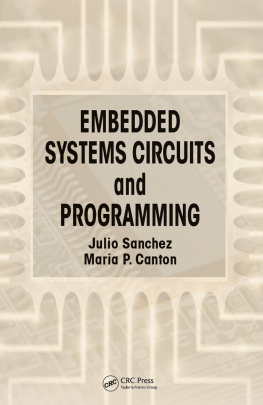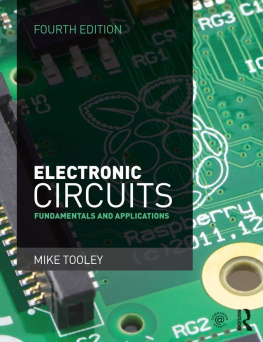
Scrivener Publishing
100 Cummings Center, Suite 541J
Beverly, MA 01915-6106
Publishers at Scrivener
Martin Scrivener (martin@scrivenerpublishing.com)
Phillip Carmical (pcarmical@scrivenerpublishing.com)
Electrical and Electronic Devices, Circuits, and Materials
Technological Challenges and Solutions
Edited by
Suman Lata Tripathi
Parvej Ahmad Alvi
and
Umashankar Subramaniam

This edition first published 2021 by John Wiley & Sons, Inc., 111 River Street, Hoboken, NJ 07030, USA and Scrivener Publishing LLC, 100 Cummings Center, Suite 541J, Beverly, MA 01915, USA
2021 Scrivener Publishing LLC
For more information about Scrivener publications please visit www.scrivenerpublishing.com.
All rights reserved. No part of this publication may be reproduced, stored in a retrieval system, or transmitted, in any form or by any means, electronic, mechanical, photocopying, recording, or otherwise, except as permitted by law. Advice on how to obtain permission to reuse material from this title is available at http://www.wiley.com/go/permissions.
Wiley Global Headquarters
111 River Street, Hoboken, NJ 07030, USA
For details of our global editorial offices, customer services, and more information about Wiley prod-ucts visit us at www.wiley.com.
Limit of Liability/Disclaimer of Warranty
While the publisher and authors have used their best efforts in preparing this work, they make no representations or warranties with respect to the accuracy or completeness of the contents of this work and specifically disclaim all warranties, including without limitation any implied warranties of merchant-ability or fitness for a particular purpose. No warranty may be created or extended by sales representatives, written sales materials, or promotional statements for this work. The fact that an organization, website, or product is referred to in this work as a citation and/or potential source of further information does not mean that the publisher and authors endorse the information or services the organization, website, or product may provide or recommendations it may make. This work is sold with the understanding that the publisher is not engaged in rendering professional services. The advice and strategies contained herein may not be suitable for your situation. You should consult with a specialist where appropriate. Neither the publisher nor authors shall be liable for any loss of profit or any other commercial damages, including but not limited to special, incidental, consequential, or other damages. Further, readers should be aware that websites listed in this work may have changed or disappeared between when this work was written and when it is read.
Library of Congress Cataloging-in-Publication Data
ISBN 978-1-119-75036-9
Cover image: Cyberspace Technology Background, Alongkorn Paingam | Dreamstime.com; Circuit Board Background, Artnoy Vector | Dreamstime.com
Cover design by Kris Hackerott
Set in size of 11pt and Minion Pro by Manila Typesetting Company, Makati, Philippines
Printed in the USA
10 9 8 7 6 5 4 3 2 1
Preface
The objective of this edition is to provide a broad view of the electronic device and Circuit design and technological challenges in a concise way for fast and easy understanding. This book provides information regarding almost all the aspects to make it highly beneficial for all the students, researchers and teachers of this field. Fundamental principles of electrical and electronic device & circuit design are discussed herein in a clear and detailed manner with an explanatory diagram wherever necessary. All the chapters are illustrated in simple language will felicitate readability of the chapters.
Chapter Organization
This book is organized into two parts as with 28 chapters in total. Part I mainly deals with technological challenges and solutions to electronic devices and circuit including the use of advanced materials. Part II describes electrical devices and systems such as solar cells, power converters, and renewable energy systems.
Part I Design and Analysis
discusses various theoretical, simulation and experimental research work on strain engineering that is discussed in brief. The gradual development of this performance-enhancing technique is also included along with some latest reports in this field of research in modern devices.
is mainly focused on double-gate (DG) TFET, having band engineering and high - k dielectrics with a detailed investigation of the transfer (Id-Vg), C-V and RF characteristics DG-TFET.
deals with a brief introduction to supercapacitors, followed by characteristics of electrolyte, types and modification strategies for the electrolyte. Further, important preparation techniques and advanced characterization techniques are also explored.
presents a tunable microstrip filter with fractal DGS. Fractal DGS is used to reduce the size of the filter. The proposed filter is a hairpin bandpass filter shape, which is designed for 3.5 GHz center frequency on the substrate of Rogers 3010 (r=10.2) with a thickness of 1.27 mm.
This chapter delivers the study approaching an emerging GaN-based HEMTs device technology appropriate for Radio Frequency and high-level power applications.
addresses the design, experiment and prospects of an electronic sensing system to determine the protein content in common food items, chicken egg albumin, milk and protein blend.
presents a detailed design and analysis of DRAM cells with a focus on the comparison of the different technologies such as CNTFET, FinFET and TFET that are suitable for low power high-performance memory design.
intended to provide information about the agricultural applications of microwave heating. It emphasizes the importance of dielectric properties in the quality sensing of agricultural products.
describes the history of solar cell right from the time of inception till the present day. The prevalent technologies of today were discussed in detail with their pros and cons.
explores the influence of the thicknesses of i-ZnO and CdS layer has been explained for CIGS solar cell. The influence of flash evaporated CdS and the thermally evaporated CdS are also studied.
presents a comparative study is presented with the help of multi-objective function for some newly developed metaheuristic algorithm and also a mathematical model developed for the PV cell which may help to determine the parameters of the cell more accurately.
explores how to monitor the solar Photo Voltaic (PV) system using IoT and various remote monitoring methods are addressed. Also, it would elaborate on the realtime implementation of smart sensors used in the renewable energy system and its challenges with some solutions.
dedicated to design and analyze a low power hybrid micro energy harvester circuit with hybrid inputs namely, PV and vibration for bio-medical devices. By using vibration sources, human movement can be converted into electrical energy.
tests the performance of five global metaheuristic algorithms based on the firefly optimization technique to obtain the solution of some high-dimensional benchmark problems without constraints.
presents an investigation of the nanostructured cadmium suilphide (CdS) thin films by inexpensive, eco-friendly successive ionic layer adsorption and reaction (SILAR) technique.
Part II Design, Implementation and Applications
Next page

